Mongolian gerbils (Meriones unguiculatus) are by far a more readily available and the more well-known of these two gerbil species – whereas the fat-tailed gerbils (Pachyuromys duprasi) are quite new to the fancy.
You can buy both in decent exotic pet stores these days – but you are much more likely to see a Mongolian than a duprasi for sale.
Although they are both ‘gerbils’ and look vaguely similar, there are some minor differences between them with regards to how they live that need to be considered.
This quick comparison guide should help you understand these differences and give you an insight into their care if you do chose them as pets in the future.
Mongolian Gerbils – Typical Lifespan: 2 years to 4 years (average 2.5)
Duprasi (fat-tails) – Typical Lifespan: 2 to 8 years (still quite unknown but average seems to be 2)
Now, let’s get down to the finer details…
Shape & Size:
Mongolian gerbils stand tall and and quite slender – spending a lot of their time sitting on their strong back legs like mini kangaroos – their long hairy tail helping them to balance.
Fat-tailed gerbils, however, are completely the opposite. Fat-tailed gerbils are short, fat and dumpy with rather an air of slowness about them – and as their name suggests – their tail is certainly something to behold (it is used to store energy and water – so the fatter the better).
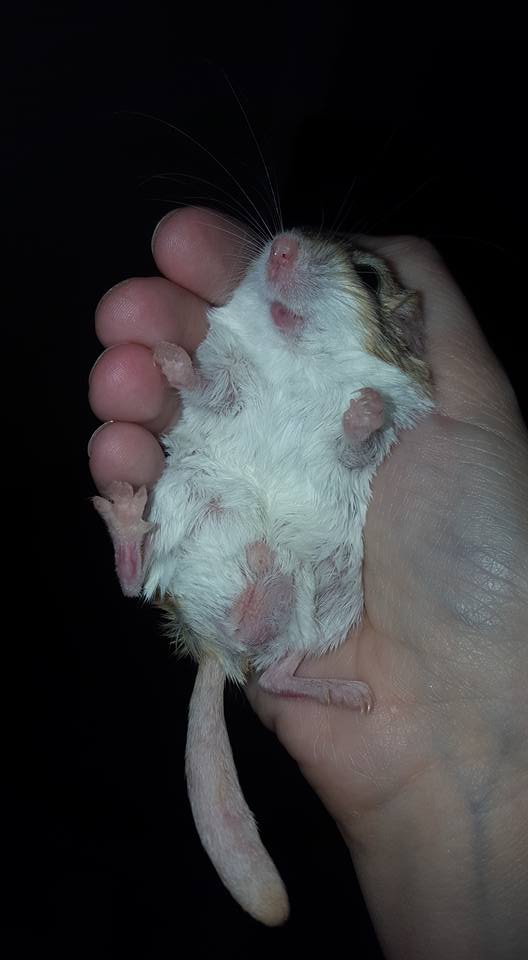
Both can fit in the palm of your hand and be carried around by young people very easily, gerbils being slightly heavier in weight (between 60g – 100g on average) whereas duprasi can be more like 40g – 90g on average, and are chunkier by far.
Duprasi only come in one genetic colour so far – their wild colour (agouti) but Mongolian gerbils have around 40 different genetic colours that can be easily found in stores or from breeders from Burmese and Schimmel to Nutmeg and Blue.
Mongolian gerbils also have three different coat types – Normal, Rexoid or Wavy coat – but these are quite new to the Gerbil Fancy themselves and so not so widespread. Dops just have the normal version.
With further breeding, the duprasi may develop more coat colours, types or spotting, but so far this hasn’t happened (2020 – but do watch this space).
Family & Friends:
Duprasi don’t really have lifelong friends – and any existing young pairs may well have to be split up as they mature – but not always. Females can get very grumpy indeed if they are made to share their home for too long – but not always.
Male doops can be more accepting, but it is still hit and miss – and with doops being quite new to the pet world – we have much to learn as more feedback is shared between doop keepers.
However, normal gerbils thrive on company. Mongolian gerbils are most sociable in nature – and choose to live in extended family clans.
All the while everyone is fit and healthy and follows the rules that is.
Unfortunately – in man-made clans (ie: in pet homes) these rules seem to be broken more often and fighting can break out – often without warning. Females in groups larger than 2 being the most likely to start to squabble, but it can happen to any clan really.
Don’t worry though – because Mongolian gerbils just love to make new friends!
Using the widely recommended (and very successful and safe) split tank introduction, you can easily bond two single gerbils to each other over a short period of time to form a new clan*.
Mongolian gerbils don’t like strangers though – even previous friends and family who have been gone for a few days to a new place (especially into an area with other gerbils or gerbil smells) can become strangers – so can’t be just put together – even in neutral territory without a possible squabble. Often, a lost gerbil can have trouble settling back in after being found a day or two later.
Gerbils friendships are based on scents – so safe introductions needs to be planned through a split tank (image below), however not much is known about introducing duprasi just yet, so best either use the split tank as for Mongolians or leave alone. Doops don’t seem to bothered about living alone so that is certainly a bonus.
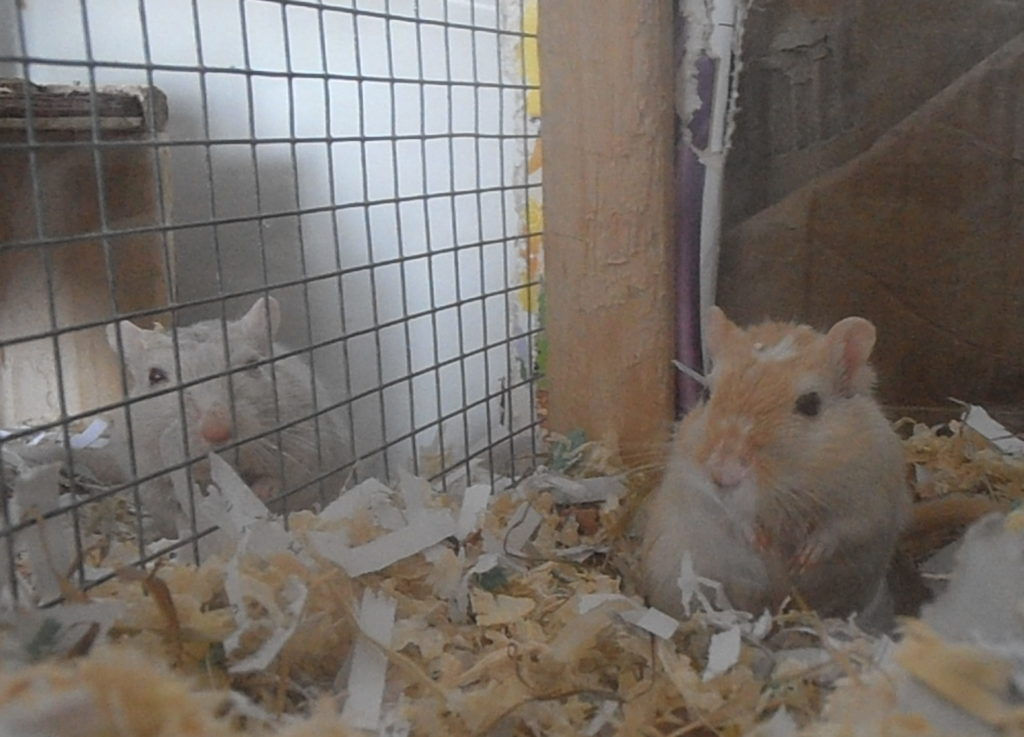
*clan = any group of any number of gerbils living together at any one time. These gerbils don’t have to have been related or introduced while young, and they may well have been in a different clan beforehand. A clan is a very individual temporary group of gerbils that get on with each other right now.
Character & Cuddles:
Duprasi are great characters individually. They seem to be very cartoon-like in their appearance and behaviour.
They move really slowly but with purpose – however, sometimes they don’t quite make it and are often found asleep wherever they were just standing.
And they really relax.
It isn’t uncommon to see a duprasi slide out of the wheel they were just sleeping in and stay asleep even though they are now half out the wheel. And on their back…
They sleep a lot in general during the day (being much more nocturnal in nature than Mongolians) – so if they are in their house and only wake up when you are asleep – you might never see them. They love building up a great big nest too out of nesting material, and so even if you take the lid off their house, you still might not see them.
They don’t tend to bite if you wake them up or pick them up though (if you are desperate) – but they can bat you off with their front feet if they don’t want to be picked up just then.
However, sometimes they don’t even care and will just lay flat in your hand – even on their back. They really aren’t in any kind of a hurry.
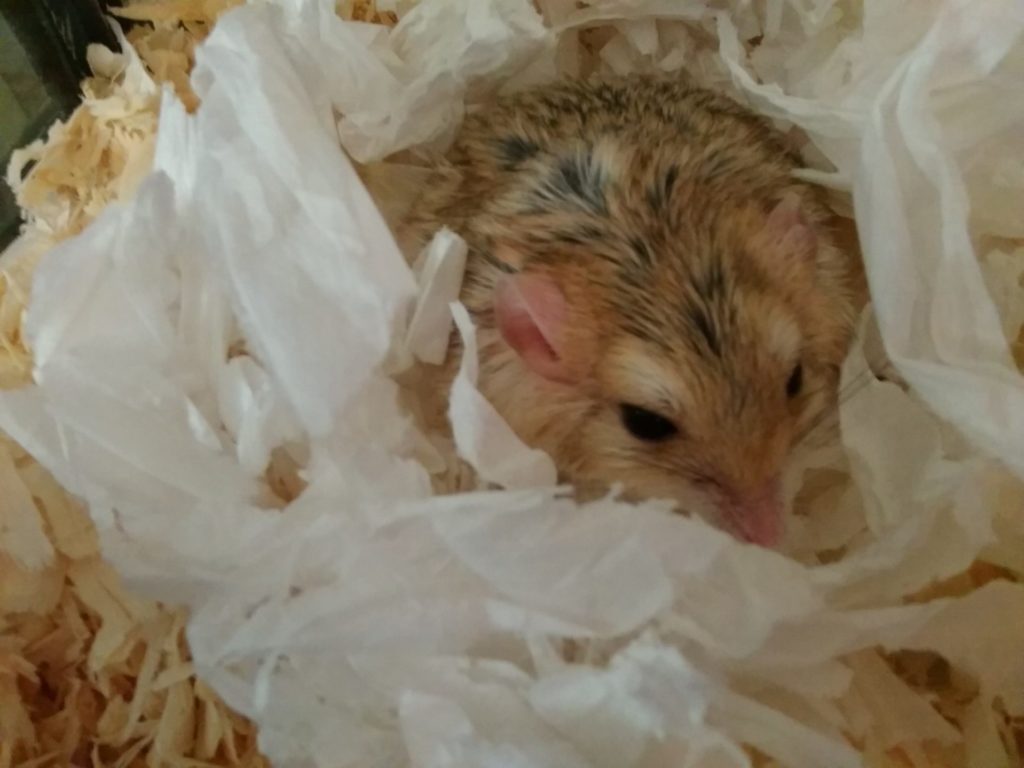
Mongolian gerbils on the other hand are very inquisitive at all times of day – and they do not sit still – and certainly wouldn’t lay on their backs! Just try taking a picture of them and you will know what we mean.
Gerbils are always in a hurry and are great to watch as they rearrange their entire tank that you just made all neat and tidy…
Duprasi don’t often come looking for cuddles (often running the opposite way to you and hiding underneath something) – you have to be there at the right moment for them – but they are great to handle and rarely ever bite. Similarly Mongolians gerbils don’t bite and are great once you are holding them – but are much more likely to come over and demand attention from you.
In the right tank set up (with a topper) Mongolians can get in the habit of coming out to see you with many responding to their names (or just any noise that is the same and associated with treats – but we don’t tell ourselves that). One gerbil is almost always more adventurous than the others in each balanced clan – but many gerbils will jump onto your offered hand to come out for a play or at least sit on your hand while eating treats.
Both types of gerbil are easy to hand tame – but although you might be able to train a Mongolian to do tricks – I doubt a duprasi could be bothered – even though I would imagine they had the intelligence?
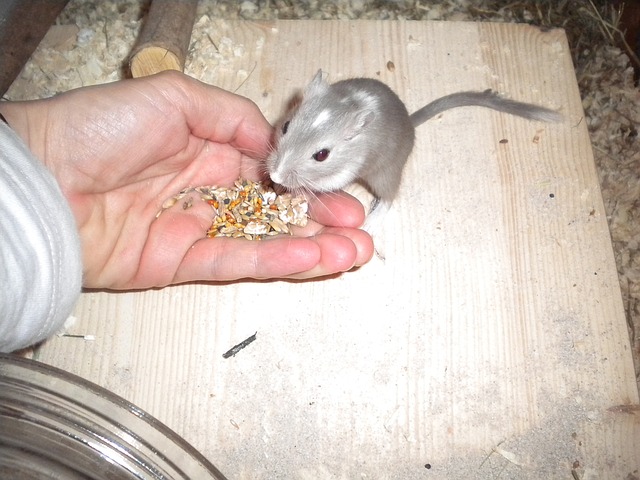
Home & Housing:
This is where gerbils and duprasi are slightly different.
Due to their very different natural features and lifestyles, they both require very different things out of their homes and habitats. Gerbils really need to live in a glass tank (with or without a cage as a topper) and doops can live in a wide variety of cages and tanks with all sorts of tubes and sections (more like a Syrian hamster set-up) – but make sure the floor space is big enough as doops don’t often use vertical space without really gentle ramps.
Gerbils love to tunnel, dig and chew – and as a result they need to be housed in a cage that is deep enough for a good 4-6 inches of substrate such as wood-shavings or aspen for digging in, as well as having space under that substrate for tunnels and tunnelling.
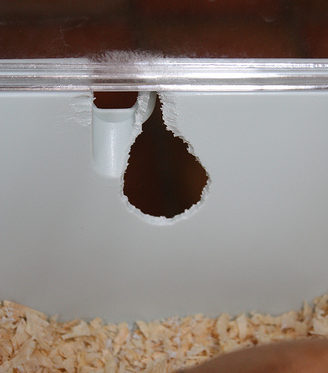
They also need to be in a home that doesn’t have any weak points that they can chew through (bearing in mind they can chew through solid wood) or anything in or around their tank made of plastic.
Gerbils can chew through plastic vents, plastic stoppers and plastic tunnels in less than half an hour – and if that plastic is the only thing between your gerbil and the outside world – you are going to have a lost gerbil at any point…
Duprasi however, don’t really chew on anything in the same way, so can usually have the same cute plastic house their entire life. As a result of this – there are a wide variety of set-ups that they can live in quite happily from tanks to RUBs and cages.
They can still chew plastic if they want to of course, like all rodents (and some of ours really have gone for it), and as doops are very active while you are asleep, you should always be aware of the weak points of their set up. Mongolian gerbils are more likely to accidentally escape just through being so nosy, or fall out of a set up with external tunnels that aren’t fully supported (and therefore not safe).
Duprasi do just fine on just an inch or two of substrate (similar to Syrian hamsters) because extensive digging and burrowing isn’t part of their normal behaviour – unlike with Mongolians (however they do absolutely love to power through substrate for fun – moving it all from one side to the other so a deep play spot is perfect). We found that if you give a fat-tailed gerbil 8 inches of bedding – they generally just walk on the top of it or move it all over to one side of the enclosure. We would also worry you wouldn’t see it again for weeks either as it would just lay under the surface – like a flatfish in sand.
Smell & Scent-Marking
All gerbils have a special scent gland in the middle of their tummies for scent-marking (which produces a smell we humans can’t smell) – they don’t produce liquids or solids with this gland like other rodents do – therefore gerbil and jirds are one of the least ‘smelly’ types of pets for keeping indoors.
Duprasi have a barely noticable scent gland and are often seem stretching over things in their homes to mark them as ‘mine’ however, they aren’t quite as avid about it as Mongolians which have a much more pronounced scent gland on their tummy – a sort of flat oval orangey-yellow rough-looking patch.
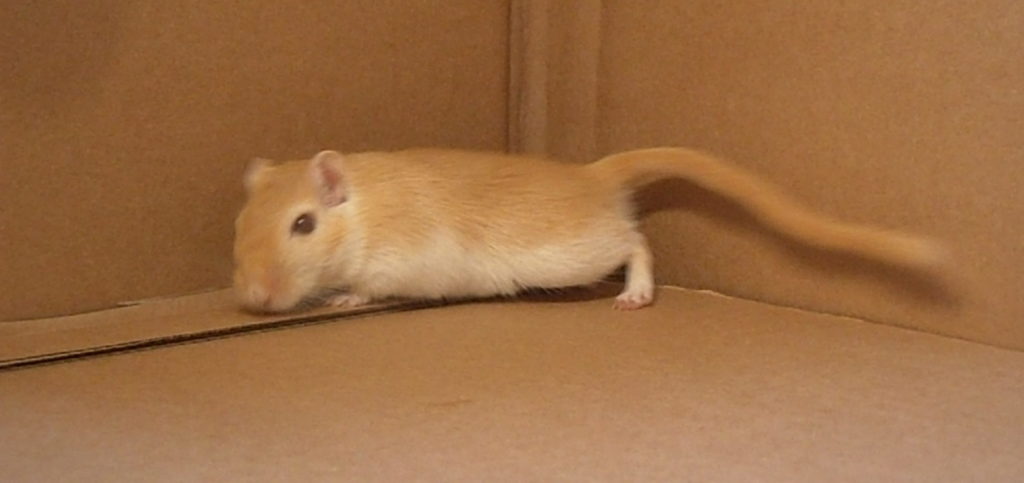
Both types of gerbils have no overall odor in their coats either and glass doesn’t retain or enhance smells, so unless the bedding has been in the tank too long, the water bottle has leaked or fresh food has spoiled, it won’t smell too bad for weeks.
Infact most large Mongolian tanks only need cleaning out once every month or so as there is so much substrate in there absorbing the smell and any waste and duprasi tanks with only one resident don’t generate much mess either, although the smaller the enclosure and the shallower the substrate the more frequently it will need cleaning.
Also adding a sandbath or dust bath will encourage them to toilet in that rather than across the whole enclosure – helping you – with the aid of a tiny tealeaf seive – to keep their tank even cleaner through the weeks…
Basically, your gerbils won’t smell.
Foods & Feeding:
Both gerbils and duprasi eat basicilly the same food and neither have any special dietary requirements.
They both do well on a commercially-made cereal-based food – either the muesli type (where you can see all the individual ingredients) or an extruded type (where all the ingredients are mashed together in clumps and you can’t see what the individual parts are).
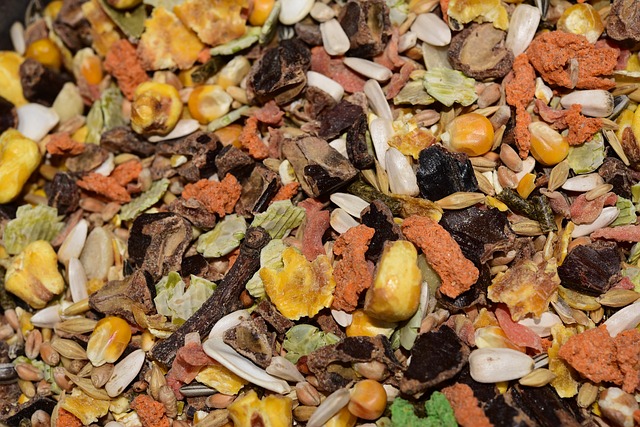
Normal adult gerbils of both types require about the same levels of protein, fats and fibre (12%, 6-8% and 4-6%) as far as we know – and these are found in most store-bought products.
They will also do well with a sprinkling of fresh fruit and vegetables a few times a week from a species-relevant fresh food safe list (kale is certainly a winner in our clan).
They also both like a small amount of live food/dried live food including mealworms and waxworms etc – both eating such things in nature as part of their everyday lives as well as fresh plants and wood to chew on (gerbils more with the wood as they just love to chew things to pieces!).
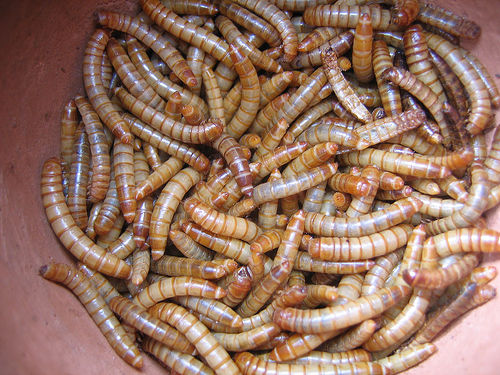
Fat-tailed gerbils do have the extra consideration of their fat tail to help you see their health – as it is like a health warning.
If it gets too thin or shrivelled in what you thought was a normal healthy adult, then perhaps something is wrong? They only store energy in their tails when they have everything working just fine in their bodies – so a thin tail can be a sign of something wrong.
No such warning sign with Mongolians unfortunately.
Age & Illness:
Doops are purported to live much longer than normal gerbils. And even though this will still be less than larger pets – it doesn’t mean that they can’t still have substantial lives.
Mongolian gerbils are deemed adult at around 12 weeks of age and can often live to 4 years or over – with 3 years being very common these days. Gerbils can die younger of course just like any individual, but in gerbils this is usually due to accidents and internal genetics rather than a reflection on their potential lifespan or how they are kept.
However, many a gerbil life is cut short from several common illnesses which usually strike from 2 years onward – and these include: Scent Gland Tumours – found mainly in males and restricted to the scent gland only – pictured below (which can be surgically removed in any healthy gerbil); Ovarian Cysts – found in females only and cause her to swell out sideways (and which can be surgically drained in healthy younger females); and Strokes which can affect any gerbils at any age and can’t be treated or prevented by veterinary intervention – just palliative care during and afterwards.
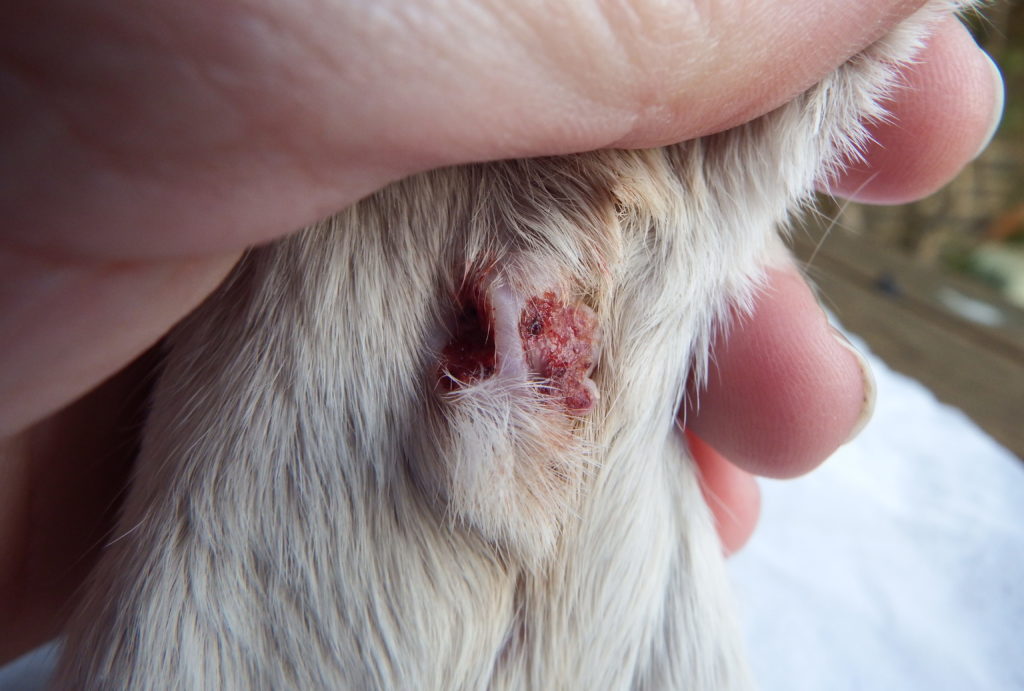
Duprasi are sexually mature at around 6-8 weeks of age and have been reported to live to 8 years of age or older – however losing them as young as 2 is still quite common. Perhaps we are missing something with their care that needs further research?
To be honest, we don’t really know too many associated health issues with duprasi really as they haven’t been widespread pets for that long – so no-one has had enough of them to notice any great patterns – but the most common injury is wounds to the tail with doops living together – as this is where other doops will aim for during an attack!
There have been reports of tumours, unexplained weight loss, increasing eye trouble (which is often a sign of something else) and accidents – but nothing specific to them – which I suppose is good really?
As these little fat-tailed gerbils live on their own – their illnesses don’t affect their friends and family – but a sick Mongolian can have some obvious effects on a gerbil clan. If the leader of a gerbil clan becomes ill or a clan member is removed from the clan for a long stay at the vets or recovery cage, it can cause the others in the clan to become confused and they may squabble.
Also – unfortunately – it is quite normal in the Mongolian gerbil world for tank mates to start to eat their dead friends if they pass – so don’t be offended by your gerbils doing this – or assume that they killed their tank mate in the first place and then did this. It is totally normal and done in a non-agressive way, so don’t think they are being naughty or horrid.
Breeding & Babies:
Mongolian gerbils go for a long-term working partnership when they set to work. A male and female gerbil often become friends before she is in heat (using the split tank introductions) and they will then live together permanently as tank-mates – if you let them (which we hope you don’t).
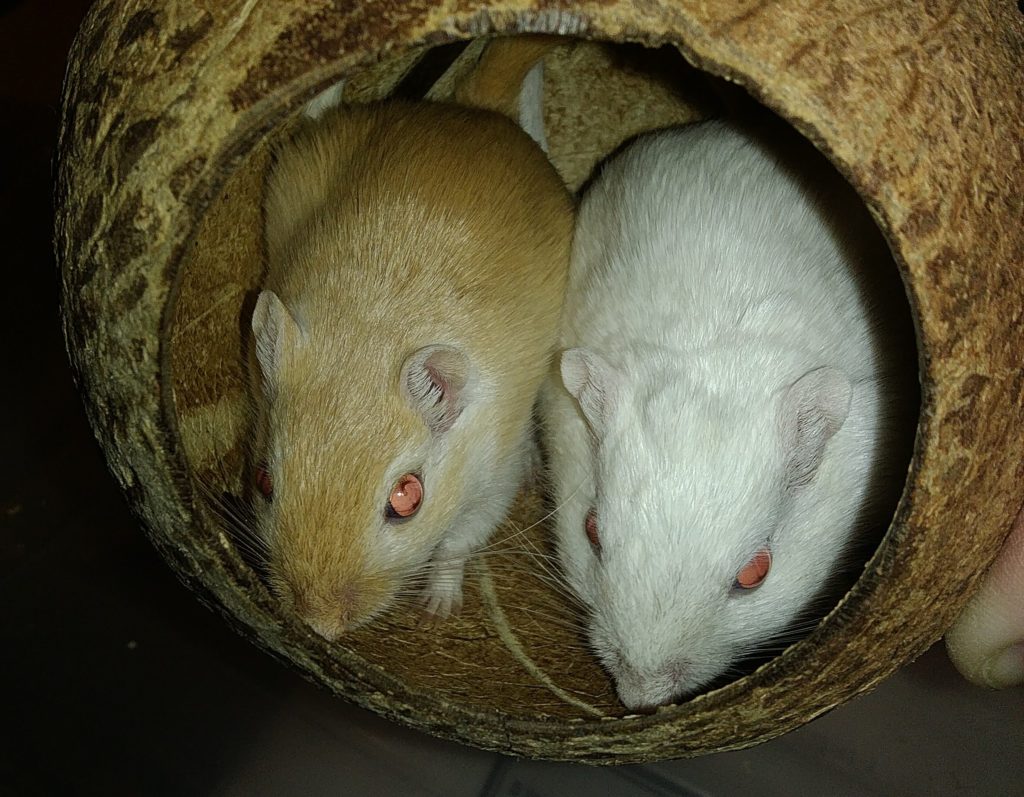
At some point she will come into heat (which usually happens every 4 days) and they will start to mate. This takes about 3-4 hours and involves a lot or running around, chasing and thrusting and then they just carry back on as normal. You don’t take the male out after mating as he will be helping to raise the first litter of pups (usually between 3-6 pups).
We say first litter, as gerbils are best left to have two litters in a row, it is just how gerbils are able to work. The reason for this is that they mate on the very same day they give birth to the first litter – often ignoring the newly-born pups for several hours after birth – which is all quite normal. Leave them to it.
This means that if you ever find an accidental litter of gerbil pups in your tank – there is no need to the male out immediately – leave him there. The female is already pregnant anyway – so he can’t do any more damage – and he can then actually help out raising his own pups rather than leave her to do it all herself. Nice guy!
Male Mongolian gerbils make really great dads – but after around 24 to 36 days the female will be ready to have her second litter (usually 4-7 pups). Obviously NOW you need to take out the male before she has them – unless you want a third litter?
As gerbils love their kids – you can take dad out with all of his sons from the first litter who are now weaned (at around 4 weeks) and put them all in a separate tank together. If you take the dad out first you can still pop his sons in with him a few days later and he will be fine.
One or all of the first litter daughters should be left in with mum to help raise the second litter if mum is ok with that (if she isn’t – pop the highest even number of female pups in with the dad too temporarily).
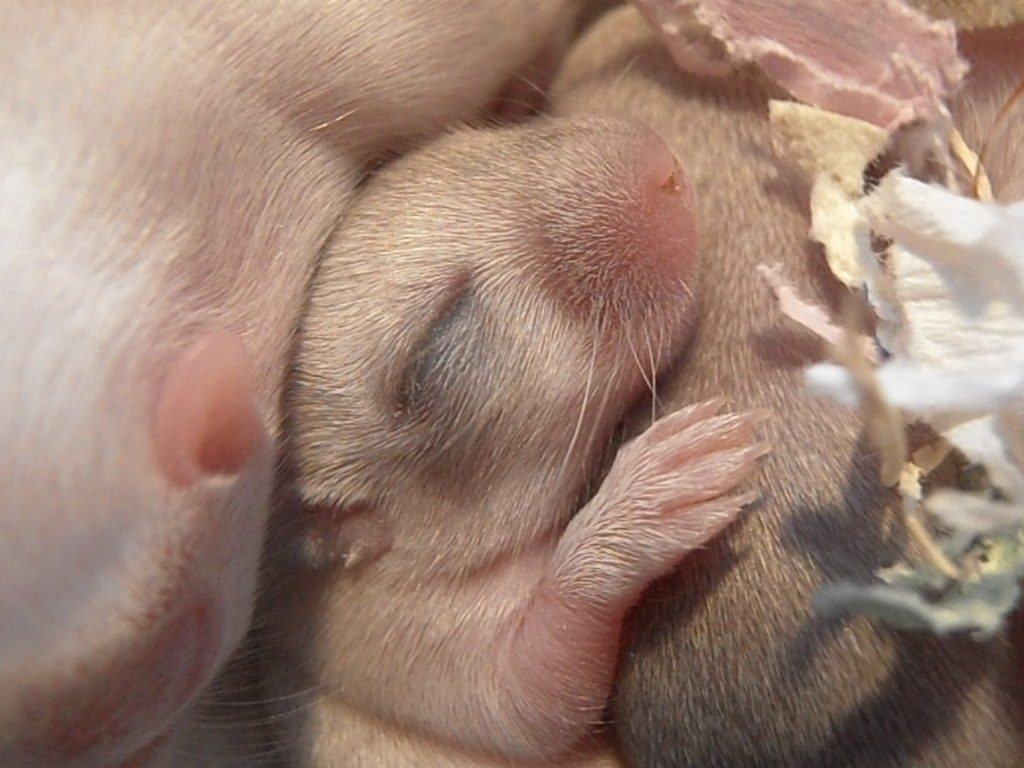
Fat-tailed gerbils however are mainly solitary creatures in captivity – as we have already said – so they need to be introduced when it comes to mating – which can be a whole experience of its own.
A female will come into heat on average every 4 days too – but that doesn’t mean she will accept a male so easily – or get pregnant.
Quite often she will bat him off over and over again and they will often be seen both on their rear legs boxing each other for hours. Totally normal. She will chase him and bite his tail repeatedly too. However, as long as no serious blood is drawn – just leave them to their squabbling for a few days at least – otherwise mating won’t take place. It is apparently what she wants?
Once he has proved a worthy suitor for her through his sheer persistance, the female will allow him to mate with her. You can take him out straight away if you see it or within a week or so to give him a break (it’s exhausting for a male to keep up this show).
It isn’t to soon as when she is ready to have the litter she will oust him anyway – and maybe beat him up some more (two nest boxes are definitely needed if you try this). Some breeders do leave him in until the first litter are born if your female lets him stay – but either way he will have nothing to do with raising his children apart from mostly keeping them warm while he is asleep.
After about 19 days the litter are born (on average between 3-6 pups) and the female raises the young on her own quite happily – well, happily in her own mind – females can get really grumpy once they are lactating so don’t expect cuddles from her during the first few weeks. They often turn into punchy attackers in our experience – charging across the tank at anything that moves (ie your hand with their food).
The tails tell you all you need to know before breeding either parent again – until their tails are scab free and back up to super fat again – they aren’t ready to mate. They would have used up all their energy resources and need to wait for them to be re-stocked. Mums from both gerbil types shouldn’t really have more than 3 litters in a lifetime really to be fair on them.
If you are breeding for health – then ideally your female gerbils (of either type) should be over 6 months – otherwise you can’t tell enough about them to make that call. If you know about their extended family too this really helps you make the best breeding decisions. Good breeder keep their own stock for sure.
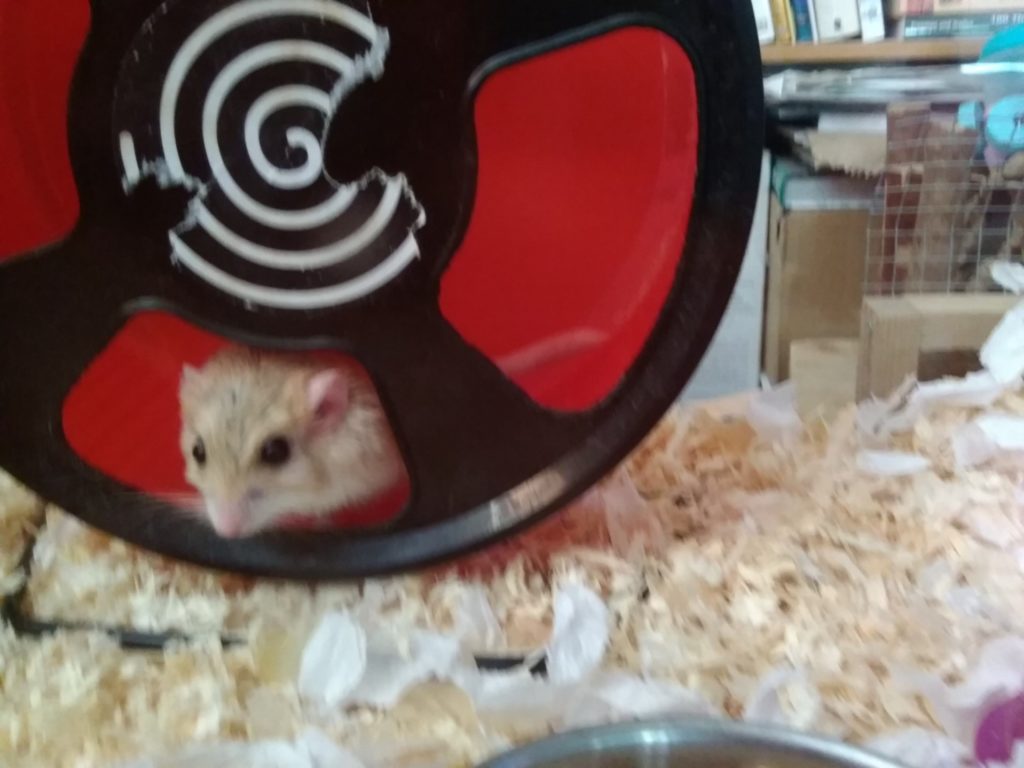
Extras & Exceptions:
Both Mongolians and duprasi need a regular sand bath to keep them clean – as it helps with the oils in their coats and helps maintains body temperature and skin health.
You can use the same dust/sand as sold for chinchillas, child-friendly garden sand or you can use corn flour for this. They will all pee and poo in this as well as eat it – no worries. Perhaps get a small tea-leaf sieve to help keep this clean so you can leave it in their enclosures for longer?
Duprasi can really enjoy a wheel (and fall asleep in it) – but we find Mongolian gerbils are 50/50 with them.
If you do get a wheel for your gerbil or doop – choose a solid thick plastic wheel (8″ minimum) rather than those with bars or moving sections which could trap tiny feet and tails. The Trixie (20cm) one shown above is our personal favourite and well loved/used by all our doops.
With Mongolians though, don’t lower the level of bedding of the whole tank to fit a big wheel in (digging is more important for them) perhaps hang it from the ceiling or add a topper for it.
Neither type of gerbil likes to swim – and they really aren’t fans of getting wet at all – so please don’t force them to stand in water or get them super wet for any reason. They bathe in dust or sand, and that is as clean as they naturally get as healthy adults. Greasy coats don’t need water anyway – they need more sand – or a box or fresh hay to absorb the grease.
Hopefully that has given you food for thought about your pet choices? If not keep reading some more of our animal comparisons…
Where to find a fat tail gerbil in USA?
Hey Lesly and thanks for coming to RodentZone.
However, I do believe that Duprasis may be illegal to keep as pets in the US as they are deemed to be of African origin and are therefore possibly listed as the ‘pest’ species. I will do some more digging to find out though as the law is always changing.
They are becoming more common in Canada though – but that still doesn’t get over the possible illegality.